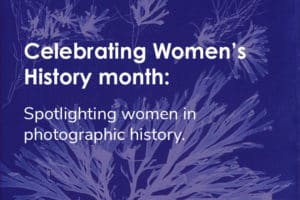Women who evolved photography: Making their mark in modern times.
June 13th, 2022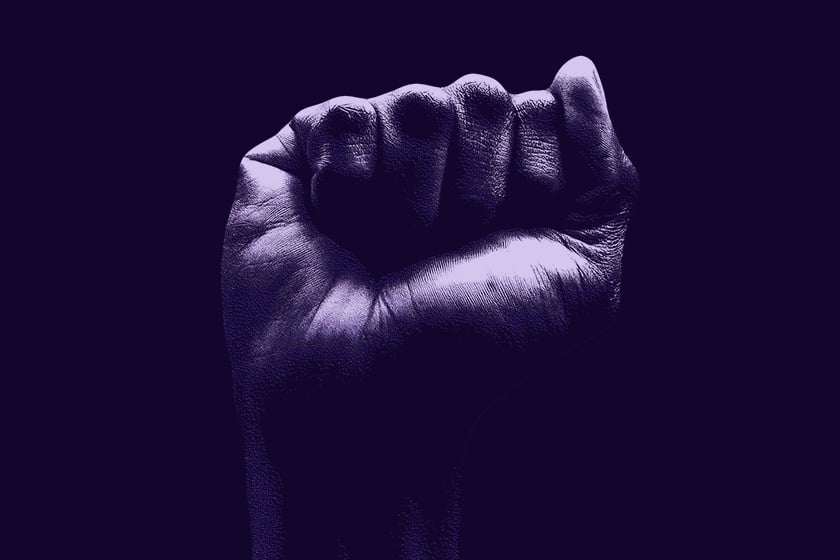
In this exploration of the women who impacted photography, let’s take a look at some of the groundbreaking experimentalists who made a difference in shifting ideals about feminism and shaping twentieth-century modernism in the arts and media.
The new era of the New Woman.
Early in the 20th Century, photography was gaining traction as the shiny new media format prominently featured in the arts, magazines and news. At the same time, Women’s Rights movements were also picking up steam, shifting the societal ideals of women as Victorian-era ladies who ran the household to assuming important roles outside the home, especially in media and the arts.
Even though women had worked in photography studios since the medium was invented in the 1830s, it was the ground-breaking work of early twentieth-century female photographers like Margaret Bourke-White and Dorothea Lange that inspired many women to move from the darkroom to behind the camera in order to pursue their own unique passions and visualize their perspectives.
Technology advancements producing more portable, more affordable cameras also enabled women to embrace their craft and receive professional training to enhance their skills. Germany and Austria led the way in this regard in the 1920s as Berlin was the fashion capital of the world at the time. Many women carved out professional success and found financial freedom in the fashion photography industry of Europe. In fact, women ran about 30 percent of all photography studios in Berlin in the 1930s.
The offbeat, surrealist and witty images created by Grete Stern and Ellen Auerbach at their Berlin-based ringl + pit studio in 1930 were used in provocative and often subversive advertisements of the day. The business and romantic partners began their artistic collaboration as apprentices under photographer Walter Peterhans in 1929. Just a year later, they created their own studio brand using their personal nicknames – ringl for Stern and pit for Auerbach.
Their portraits created for ads were often a reflection of their own revolutionary lifestyle as “New Women” forging an independent, non-conventional role in society. They shared a combined studio and living space with a diverse mix of friends representing a variety of genders and sexual orientation. Sadly, their bright flame of artistic and cultural innovation burned briefly as the rise of Hitler’s Nazism drove them to close their studio in 1933 and flee Germany to disparate countries, never closely collaborating again.
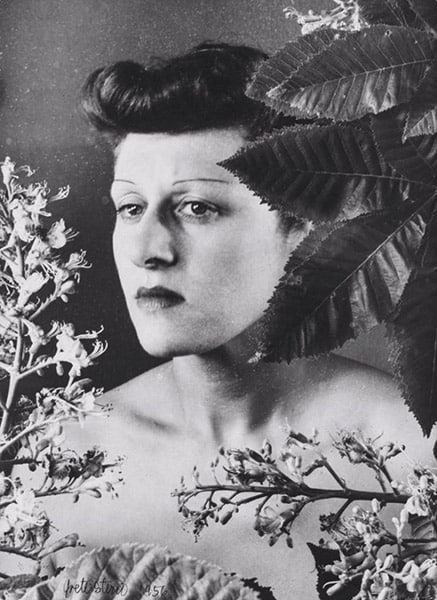
Female photographers embracing race and cultural diversity.
The US census of 1920 recorded only 101 Black female photographers and only one in New Orleans, Louisiana – Florestine Perrault Collins. At that point in time, Florestine was 25 years old, yet she had eleven years of photography experience, having started at the age of 14. As the eldest of six children, her parents pulled her out of school to help augment the family income and Florestine even lied about her race in order to pass as white to get photo assistant jobs for established white photographers in the area.
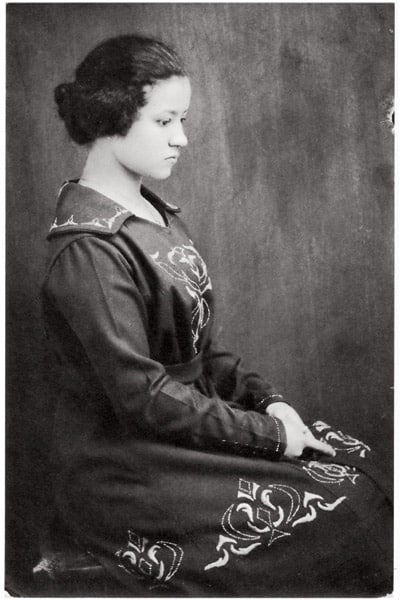
Following her first marriage in 1917, she became an entrepreneur with a home studio and later moved to a commercial space in downtown New Orleans in 1923. As a photography studio owner, Florestine embraced her racial identity and promoted herself as an African-American female photographer who was more adept at capturing images of female clients and children than her male peers. She even used an image of herself in ads and promotions to illustrate her portrait skills.
At the time, many female photographers and especially those of various ethnicities, worked with their husbands to run a business. Florestine demonstrated her own photography and marketing acumen as an independent studio operator. She vigorously promoted the concept of using photography to memorialize important life events such as weddings, graduations, reunions and first communions. Florestine worked to ensure that her photographs would “reflect pride, sophistication, and dignity,” of Black Americans over a career that spanned nearly 30 years and enabled her to support her family during the Great Depression.
Around the same period of the 20th century, Karimeh Abbud was considered the first Arab and Palestinian professional female photographer whose work went largely unrecognized until the 1980s. As a self-proclaimed “Lady-Photographer,” Karimeh successfully earned a living from her craft with images mostly shot in private homes that showed middle-class Palestine life as it was, thereby breaking from negative European misconceptions about the region.
Continuing the groundbreaking spirit of Florestine and Karimeh, modern-day African-American female photographers Idara Ekpoh of Phoenix, Arizona, and New York-based Flo Ngala have recently been honored for their noteworthy accomplishments a hundred years after their pioneering counterparts.
Idara Ekpoh is a first-generation Nigerian-American woman who began her journey as a photographer as recently as 2016 and quickly realized the power of photography as a visual storyteller. Her 2021 digital series, Amplifying Black Voices, was featured by Nasdaq as a multimedia retrospective documenting Black life. Idara also created a popular series titled “Self Portrait Sunday” that began during the pandemic lockdown as a way to explore her identity and control her own narrative in the ways she sees herself.
Florence Ngala was born to immigrant parents from Nigeria and Cameroon in Manhattan in 1995. Known as Flo, she has quickly gained acclaim as an American street, celebrity, portrait photographer and photojournalist based in Harlem. Flo’s celebrity portraits of Megan Thee Stallion, Gucci Mane and Cardi B, along with her featured work in Vogue, Essence, Forbes, Rolling Stone, and for commercial clients Reebok, Nike and Revlon, have given her quite a large portfolio in just a few short years. Her photo coverage on Figure Skating in Harlem was featured on the cover of the New York Times, and just as recently as May, Flo became the first Black woman to shoot inside the 2022 Met Gala.
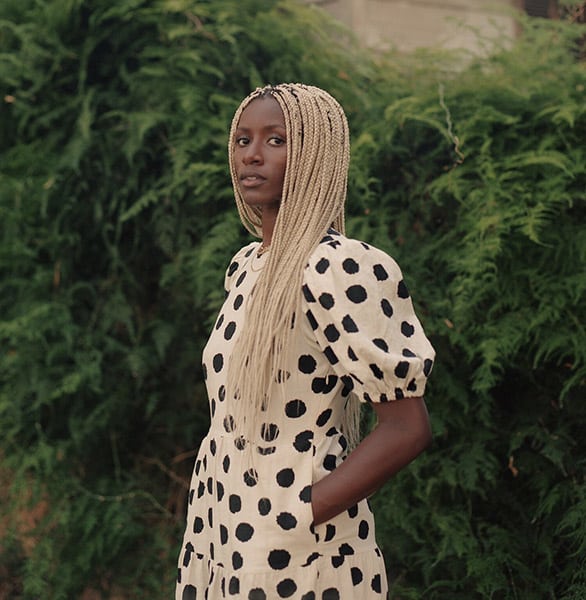
Photographing our shifting society.
Just as Diane Arbus was considered a revolutionary photographer for her intimate images of people on the “fringes of society” at the time, several female photographers who came before and after Diane are known as innovators by capturing important shifts in society.
The work of Mary Ellen Mark is often referenced alongside Diane Arbus for highlighting inequalities and prejudices in society. Born in 1940, Mary Ellen Mark experienced the broad shift of society and life experiences across the 50s and 60s, through the 70s and 80s, and was instrumental in documenting diverse cultures with a high degree of humanism. She famously portrayed situations reflecting such wide societal swings as both Mother Teresa and Bombay brothels in India.
The seminal project of Mark’s career is perhaps her photo essay Streetwise, depicting the struggle for survival of runaway children in Seattle that became the basis for an academy award nominated film directed and photographed by her husband, Martin Bell. She published twenty books and was honored with many awards, accolades and honorary degrees before her death in 2015.
Cindy Sherman is considered part of the Pictures Generation, along with Sherrie Levine and Robert Longo, with distinctive work that has been featured at the National Portrait Gallery in London and the Museum of Modern Art in 2019. Cindy forged a reputation for using self-portraits in a diverse range of costumes and poses to distort societal ideals of femininity through portrayals of female stereotypes.
Best known for her series Untitled Film Stills (1977-1980), Cindy shifted her art education focus from painting to photography while at the State University of New York at Buffalo. At the age of 23, she began shooting images for the series that are mostly female caricatures set in movie industry-style promo stills portraying characters such as the jilted lover, the unhappy housewife, or the jaded seductress. According to Cindy, “It seems boring to me to pursue the typical idea of beauty, because that is the easiest and the most obvious way to see the world. It’s more challenging to look at the other side.”
After just two lessons on photography as an art history major at the University of Arizona night school, Linda McCartney became obsessed with the creative craft. She delved into the history of photography, learning about handmade cyanotype prints, getting inspiration from the works of Dorothea Lange and Edward Weston, and experimenting by shooting thousands of Polaroids.
Linda’s reputation as one of the most recognized photographers of the burgeoning rock and roll music scene of 1960’s society began with an opportunistic event while she worked as an editorial receptionist at Town and Country Magazine. She leveraged an unused invitation to a promotional party for the Rolling Stones band to document and photograph the event. Her editors were taken by her photographic style and the relaxed, intimate images she captured of the band and began giving her regular assignments in the music industry.
Linda cultivated a unique visual and technical photography style that often incorporated behind-the-scenes images letting viewers get to know music icons as people. Soon, musicians and bands ranging from up-and-comers to established stars were commissioning Linda to shoot publicity portraits for their tours.
As the house photographer at the Fillmore East in NYC, Linda photographed countless bands – many now legendary and iconic. From The Doors to The Grateful Dead, from Frank Zappa to The Beach Boys, from B.B. King to The Byrds, Linda was immersed in the 60’s music scene and was named US female photographer of the year in 1967, then became the first female photographer whose work was featured on the cover of Rolling Stone magazine with her portrait of Eric Clapton in May 1968.
While on assignment to shoot for an editorial feature on the ‘Swinging Sixties,’ Linda met Paul McCartney and they were married in early 1969. Following the famous breakup of The Beatles, Linda joined Paul as a vocalist and keyboardist in the band Wings. Linda continued pursuing her passion for photography by recording the travels and exploits of the band as well as family life in rural England. “Photographer” was just one of many important roles in Linda’s life. Before her death in 1998, she was an activist for animal rights, the environment, promoted a vegetarian lifestyle, and many other causes.
Nan Goldin impacted photographic history with her important and startling images depicting the effects of the HIV crisis on the LGBTQ community, the opioid epidemic and sexual abuse. Nan approached these difficult themes from an insider perspective, with subjects who were typically friends of hers working in bars or walking streets. From the 1970s, Nan explored society’s definitions of gender and normality in order to give voice to previously underground communities that were emerging from the shadows and gaining lifestyle acceptance.
Two of Nan’s most notable works are The Ballad of Sexual Dependency, which was exhibited at the NYC Museum of Modern Art in 2016, and her self-portraits after being attacked by an abusive boyfriend.
Lia Clay Miller is the first trans woman photographer to shoot the cover of OUT magazine and has cemented her reputation working in fashion and LGBTQ+ lifestyle media. Ironically, she thinks she might be much further along in her career today if social media did not exist and the celebrity aura surrounding photographers was more like it was in the 80’s and 90’s.
Growing up in North Carolina, Lia’s grandmother was a diligent casual photographer, constantly taking pictures during trips and family events. After her grandmother challenged eight year-old Lia that she would never figure out how to properly use a camera, Lia took up the craft just to prove her grandmother wrong. Lia refined her skills by photographing people throughout high school, then later attending art school and during internships at fashion magazines including Vogue.
After college, when Lia realized she was a trans woman, she took two years off to deal with her life transition then pursued a master’s degree. She soon got a job at Teen Vogue and assumed her career track would lead to being a photo editor. However, she became an independent freelance photographer shooting covers for various magazines and media. Then began her clash with social media.
As more of a private person, Lia discovered that she was losing out on some jobs because she only had a few thousand Instagram followers and wasn’t presenting herself as a photographer/personality/icon. In an interview with Coveteur magazine, she estimates that this emphasis on photographers as celebrities would not have slowed her career trajectory if it instead began 30 years ago. Lia wonders how Annie Leibowitz would have fared starting her career under today’s social media scrutiny. “No one knew who she was at the beginning besides her work in Rolling Stone. They didn’t know her life or her social media handle. If I was a photographer back in the ’80s and ’90s, I would have been so much further in my career than I am now,” Lia related.
Lia says she became a photographer to stay behind the camera and not be judged by whether she’s an enigma or “cool.” And her work behind the camera is renowned for highlighting modern feminine glamour, often in black and white. Stating that she would prefer women wearing “hats, gloves and tiaras everyday of our lives,” Lia seeks to depict her subjects as powerful yet vulnerable and values working with stylists to help realize her vision for an assignment.
As we retrospectively consider the valuable contributions of women photographers from the invention of the craft to today, we can also draw inspiration for current and future generations to make their mark and continue evolving and elevating the photography industry.

